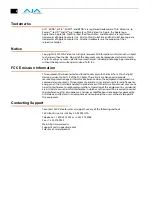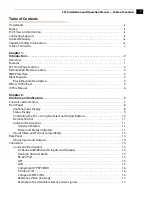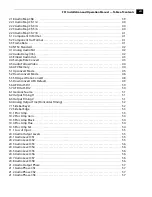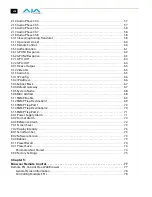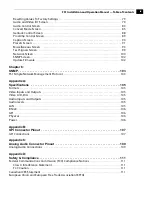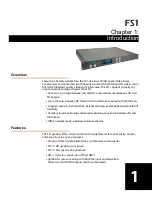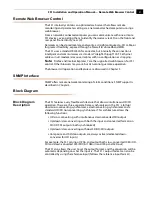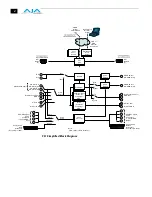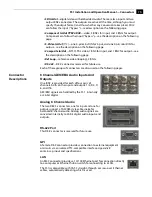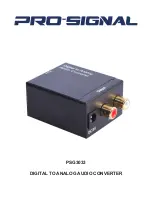
1
3
FS1 Installation and Operation Manual — Remote Web Browser Control
Remote Web Browser Control
The FS1 internally contains an optimized web server that allows remote
monitoring and parameter setting via a network-attached computer running a
web-browser.
From a network-connected computer you can communicate with one or more
FS1 devices, even getting them to identify themselves via LEDs on the front and
rear panel (front:
Identify
, rear:
ID
).
Networks can be closed local area networks, a straight computer-to-FS1 cable, or
for greatest flexibility, exposed through a firewall to a broadband WAN.
The FS1 uses a standard RJ45 LAN connector, but internally the connection is
intelligent and communicates via standard “straight-through” CAT 5 ethernet
cables or null-modem (cross-over) cables with no configuration or strapping.
Note:
Firefox and Internet Explorer 7 are the supported web browsers for FS1
control. Other browsers may work, but AJA cannot guarantee operation.
The browser GUI operation and features are discussed in Chapter 5.
SNMP Interface
SNMP offers remote network monitoring of alarm conditions. SNMP support is
described in
Chapter 6
.
Block Diagram
Block Diagram
Description
The FS1 features a very flexible architecture that allows simultaneous HD/SD
operation. There are three separate frame synchronizers in the FS1: a full up/
down/cross-converting synchronizer, a downconverting synchronizer, and a
standard HD/SD non-converting synchronizer. This architecture allows the
following functions:
•
HD cross-converting with simultaneous downconverted SDI output
•
Up/down/cross-converting with both the input and converted formats on
SD/HD SDI outputs (both synchronized)
•
Up/down/cross-converting with dual SD/HD-SDI outputs
•
Composite and S-Video outputs are always active (dedicated down-
converter for HD inputs)
For example, the FS1 can input 720p, and output both cross-converted 1080i HD-
SDI and down-converted 525i SDI (or 1080i in and 720p and 525i out).
The FS1 also allows the user to set the output format, and the conversion will be
automatic depending on what the input is. The FS1’s output format can also be
controlled by using the reference input (follows the reference input format).


